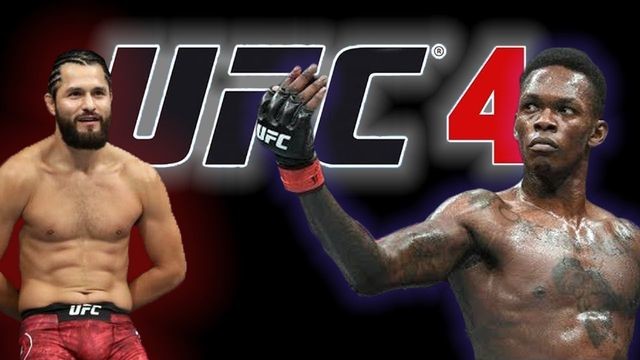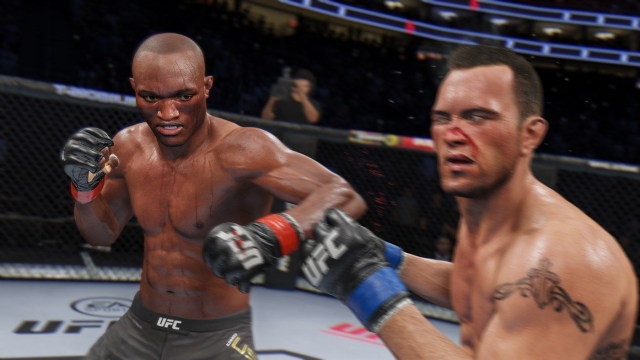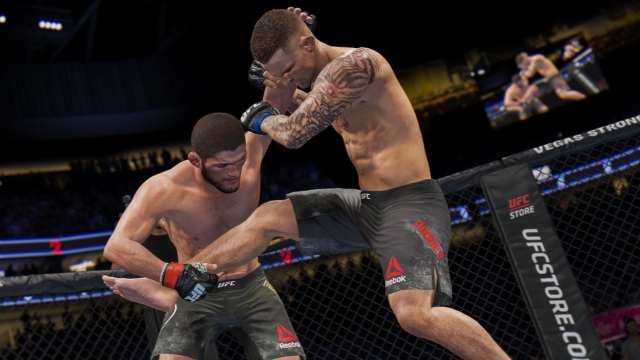EA Sports UFC 4

EA’s UFC franchise has gone from having a great concept but needing more polish to being finely-tuned, but lacking in content. Throughout the series, the in-cage combat has felt both more advanced than prior UFC games and yet less polished due to timing issues and wonky submission systems being put in place. EA UFC 3 saw a simplified system help to remedy that, and while it did, it still wasn’t quite the total package fans of the sport were seeking. It was, however, the best-playing entry in the series yet and EA UFC 4 builds on that foundation to create the best-feeling MMA game in EA’s decade-long MMA gaming portfolio. While EA MMA was a strong foundation, EA UFC allowed the world’s biggest MMA company to gain a new level of credibility by being partnered with the company that has personified top-notch sports games for over 20 years.
EA UFC 4 enables for a greater level of in-cage control over your fighter and a completely revamped career mode. This is something that EA’s teams have excelled at and while I may have preferred the in-cage action of the Undisputed series to EA MMA, nothing until this game’s career mode has found a way to top what EA MMA did having you start from the bottom and work around the world to become a better fighter. Later EA UFC games would have takeoffs of this, but none have gone to quite the level of detail as UFC 4 has at immersing you into the world of fighting and making you think about things that you normally wouldn’t.
Now, you have to find a careful balance between things like timing out your fights and making sure you have enough time to handle PR. If you want, you can cut back on the amount of time between fights – but doing so puts you at a disadvantage as you will wind up with reduced stats if you fight without much between-fight training. The training is more interactive now than it was before and focuses on more drills along with freestyle training for each discipline to keep you sharp in everything. However, you don’t want to go too hard all the time because that too has consequences.
While you can learn new tricks from MMA legends, and level them up over time, if you do too much damage to a training partner, you’ll take them out of commission. If you do this to every partner, you’ll be left with only a heavy bag to train with and may wind up not being adequately trained or even sustain an injury in training. Going hard with your partner can lead to permanent injuries or stat decreases – while minor injuries can be healed up with either ice for a short-term fix or treatment for a longer-term fix at the expense of a bit more between-fight points. Things like sponsorships and PR work are covered nicely as well.
You can build up your fanbase or be a jerk on social media, you can build or burn bridges with fighters to aid in your training – or if you want, you can even hurt them in training while they teach you new moves. You have a lot of flexibility in the path you take. You can start off small, fighting on shows in front of gas stations and build up slowly in the WFA, or win a few amateur fights and then go to Dana White’s Contenders Series and fight in the Apex to get in the deeper waters. It’s a battle of risk versus reward as the former path allows you to fight lower-ranked competition, while the latter pits you against tougher rivals. With the deeper water come more rewards like sponsorships and obligations to please them, and the ability to earn more money.
The faster you rise to the UFC and rise in the UFC, the faster you can become the greatest of all-time. While hall of fame runs have always been an end game in UFC games, this is the first game to use the company’s new championship belts as a marking point of your career’s journey. The real-world belts have jewels put in them for each win and with so many slots to fill, you wind up with a long, robust career before calling it quits. Now, you have a lot more fights to look forward to and have more freedom between them.
If you want, you can be a nice guy or even be a jerk to your promoter and refuse fights to make life hard for them. The career mode is far more outright fun now than it’s been in prior games, where it was hurt a bit by lackluster voiceover work from the fighters. By making things like social media posts and hype videos silent, they’ve kept the presentation stronger with addition by subtraction. Being able to choose to simulate training is also nice, as it keeps the pace a bit quicker, but at the expense of not allowing you to level up your character as much as you could – and this could be disastrous early on and prevent you from really having a “later on” to look forward to.
Rushing through training may seem like you’re doing yourself a favor, but just like in life, trying to take shortcuts never pays off. If you skip out on training your ground game, then you’ll fall to anyone who is remotely good at BJJ. Focusing on the ground game allows you to be more versatile and not just survive on the mat, but thrive with things like chokes and kneebars. UFC 4 offers up more submissions from more positions than before and allows you to get into those positions in more ways by revamping the takedown system and making it more rewarding to get big slams.
There’s nothing quite like drilling being in the mount and locking on an armbar or choke and then coming to fight day, getting rocked, and finding that the training you did before the fight allows you to earn the tap. The revamped submission system makes the act of getting a submission more fun than it’s been in an EA MMA game since EA MMA a decade ago. In the six years of EA UFC games, they’ve never quite found the right system. The first game’s was needlessly convoluted despite at that point, having 14 years of MMA games to study from. The second and third improved things a bit, but still didn’t make it universally great.
The fourth time was the charm for EA’s UFC offerings as the way to earn a tapout has finally been unified for armbars and chokes. The new system has you lock on or try to escape using a red and blue bar system. The attacker wants to have the red and blue bars over each other, while the person in the hold wants their bar as far away as possible to escape. Each gets a fair chance to either escape or rock the foe with either slams or punches and victory is sweet while defeat hurts that much more. If you’re in career mode and suffer a tapout loss, you also have to factor in a possible injury not only hurting you for one fight, but for your whole career.
Submissions being made more fun to do ties into UFC 4’s whole approach being to loosen things up a bit. Prior games have been pretty rigid and while cameos from the likes of Bruce Lee and Mike Tyson have made things a bit more fun, that’s been taken to a new extreme with UFC 4. Now, you can have backyard fights – which is pretty fitting given that’s how Kimbo Slice made his name and he’s once again featured here. Here, you have folks watching fights in a makeshift chainlink cage and it does a solid job of at least putting backyard fighting in a game – something you wouldn’t really expect to see in an officially-licensed game. The most enjoyable new mode is Kumite, which gives you an old ’70s kung fu-esque temple arena to fight in complete with revamped sound design.
The whole AV experience in UFC 4 is revamped, with new commentary from Jon Anik and Daniel Cormier alongside each type of venue looking and sounding different. The gym setting has lights going through the windows and partially blocking your view, while the Apex is a bit darker. The backyard area is bright and has neighbors catcalling and throwing insults, while Kumite features a Mortal Kombat-esque announcer and adds some reverb to the strikes making each blow sound like its smashing bones with each shot that lands flush. There’s a lot less jank going on with collision detection and the days of any input lag for strikes are long gone. While the graphics themselves are largely the same as UFC 3 for returning roster members, the overall presentation is a lot stronger.
EA Sports UFC 4 is EA’s strongest MMA game yet, even if it isn’t quite all it could be. The career mode is top-shelf, but it’s still a bit disappointing to not see PRIDE replicated in an EA UFC game when they had their own expy for its follow-up in DREAM in EA MMA. Still, EA Sports UFC 4 manages to deliver the best-playing MMA action in company history and maybe we’ll see some new content down the road to fill in some of the gaps in mode selection and the roster. As it stands, this is a must-play game for MMA fans and finally provides a satisfying, easy to learn submission system that makes the entirety of MMA action enjoyable for players of all skill levels.
Reviewed By: Jeremy Peeples
Publisher: Electronic Arts
Rating: 92%
——————————————————————————–
This review is based on a digital copy of EA Sports UFC 4 for the PlayStation 4 provided by Electronic Arts.
 Game Over Online
Game Over Online











